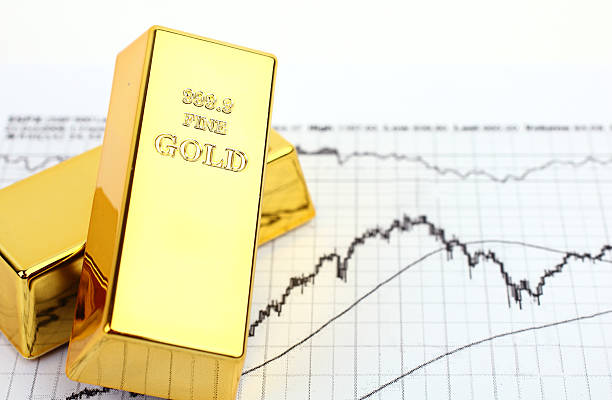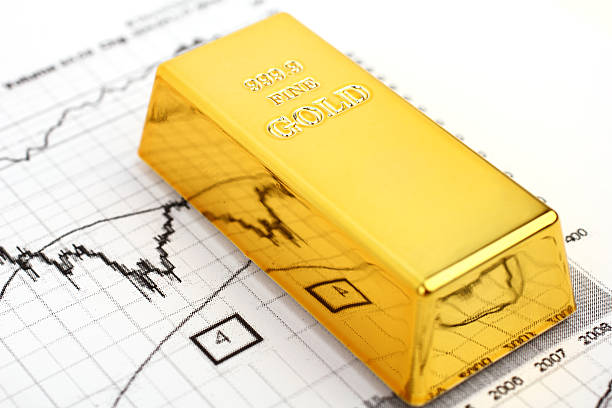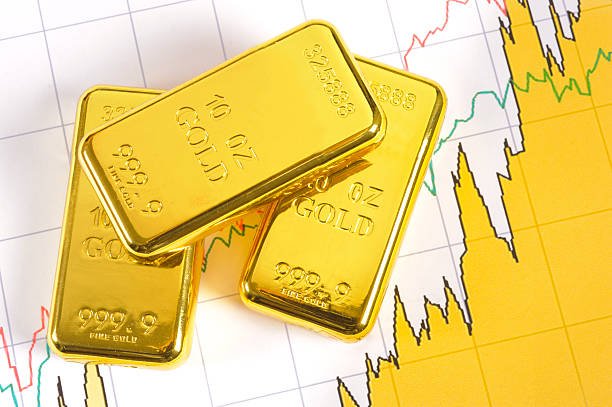What is Your Gold Price Forecast?
Gold, the precious metal known for its enduring value and versatility, has been a staple of investment portfolios for centuries. As the global economy continues to navigate the complexities of inflation, monetary policy, and geopolitical tensions, the gold price remains a crucial indicator of market sentiment and economic stability. In this article, we will delve into the current gold price forecast, exploring the key factors that drive its value and the predictions of experts in the field.
Gold Price Forecast: Bearish Continuation in Play with Key Support Under Threat
Gold (XAU/USD) has enjoyed a remarkable rally this year, peaking near $2,450 in early May. However, the upward impetus has recently started to wane, with bullion retreating over 4% from its highs in the past few trading sessions. This price correction suggests a shift in investor sentiment, with bulls likely seeking greener pastures.

Technical Analysis: Key Support Zones and Resistance Levels
For traders entertaining short positions, a crucial price point to watch is the $2,335 support zone. This area represents a confluence of technical indicators, including a key trendline and the 38.2% Fibonacci retracement of the March-May rally. A decisive break below $2,335, accompanied by higher-than-average trading volume, would be a strong selling signal.
If the price falls through $2,335, the next line in the sand is the 50-day simple moving average, currently sitting at $2,325. Breaching this support could trigger a deeper pullback, with potential downside targets around $2,265, a critical Fibonacci level just below this month’s swing low.
On the other hand, if the bulls regain control and push prices higher, initial resistance looms at $2,365, followed by $2,377. A push past this latter ceiling could dampen bearish sentiment and pave the way for a rally toward $2,420. Continued strength could even bring the all-time high back into play.
How to predict the price of gold?
Predicting the price of gold involves analyzing various economic and market factors that influence its value. Here are the key steps to forecast the gold price:
1. Understand the Factors Affecting Gold Prices
- Interest Rates: Changes in interest rates can significantly impact gold prices. When interest rates rise, gold prices tend to fall as bonds become more attractive. Conversely, falling interest rates can drive up gold price.
- Inflation: High inflation rates can lead to increased demand for gold as investors seek a safe-haven asset. Conversely, low inflation can reduce demand and lead to lower gold prices.
- Geopolitical Tensions: Geopolitical conflicts and tensions can drive up gold prices as investors seek safe-haven assets.
- Central Bank Purchases: Central banks play a significant role in gold demand, and their purchases can support gold prices.
- Currency Strength: The strength of the US dollar, in which gold is priced, can impact gold prices. A weaker dollar can drive up gold prices, while a stronger dollar can reduce demand.
- Supply and Demand Dynamics: The balance between gold supply and demand can influence prices. Supply constraints can drive up prices, while increased supply can lead to lower prices.
2. Analyze Historical Data and Trends
- Historical Price Data: Study historical gold price data to identify patterns and trends. This can help in predicting future price movements.
- Technical Analysis: Use technical indicators such as moving averages, RSI, and Bollinger Bands to analyze gold price movements and identify potential trends.
3. Use Economic Indicators and Forecasts
- Economic Forecasts: Analyze economic forecasts, such as GDP growth, inflation rates, and interest rates, to understand how they might impact gold prices.
- Monetary Policy: Monitor central bank monetary policy decisions, such as interest rate changes, to understand their potential impact on gold prices.
4. Consider Expert Opinions and Market Sentiment
- Expert Opinions: Consult expert opinions from financial institutions, analysts, and industry experts to gain insights into their gold price predictions.
- Market Sentiment: Monitor market sentiment and investor attitudes towards gold to understand how they might influence gold prices.
5. Use a Combination of Methods
- Combining Methods: Use a combination of the above methods to create a comprehensive gold price forecast. This can help in identifying potential price movements and reducing the risk of incorrect prediction.
6. Continuously Monitor and Update the Forecast
- Continuous Monitoring: Continuously monitor gold price movements, economic indicators, and market sentiment to update the forecast as needed.
Supply and Demand Dynamics
A tight supply of gold has the effect of driving up the metal’s price. While disruptions in mining operations can limit gold supply, strong demand for the precious metal is a major cause of supply constraints. In recent years, gold’s increasing use in industrial applications has been a major source of demand, resulting in supply challenges that have driven the price up.
Interest Rates and the Dollar
As for interest rates, gold competes with bonds, stocks, and high-yield cash savings accounts as investments. When interest rates go up, bonds, high-yield savings accounts, and other investments become more appealing than gold. That causes gold prices to dip as investors pull out their funds to pursue yield-bearing investments.
A stronger U.S. dollar makes gold more expensive to purchase for those using foreign currencies. As a result, a stronger dollar tends to weigh gold prices down as it reduces demand for the yellow metal.

Geopolitical Tensions and Central Bank Purchases
Geopolitical tensions tend to drive more investors to gold, which causes the metal’s price to jump. The elevated gold prices in 2023 can also be partly attributed to the conflicts in the Russia-Ukraine war in Europe and the Israel-Hamas war in the Middle East.
Central bank purchases also keep demand high and the price supported. As a result, gold could see more all-time highs as we progress through 2024, rising to $2300 by the year’s end.
Gold Price Forecast for 2024 and Beyond
Gold has fallen from its all-time high of $2222 after the SNB cut rates, boosting the USD. However, the gold price remains supported by the prospect of Federal Reserve rate cuts and a lower interest rate environment globally. Elevated geopolitical tensions and central bank purchases also keep demand high and the price supported.
What is the 5-year gold price forecast?
The 5-year gold price forecast varies among different sources and experts. Here are some projections for the gold price over the next 5 years based on the provided sources:
- Gold Price Prediction for the Next 5 Years from Long Forecast:
- The Economy Forecast Agency predicts a trading range between $2,800 and $3,200 by 2025, with a gold price forecast for the next 5 years at $3,300.
- Gold Price Forecast for the Next 5 Years from Wallet Investor:
- Wallet Investor offers a gold price forecast for the next 5 years, with an opening price in 2025 forecasted at $2,400 and a closing price in June 2025 at $2,409. The year is expected to close at $2,500 with a maximum of $2,520. The gold price prediction for the next 5 years is $2,700.
- Gold Price Prediction 2025-2030 from Coin Price Forecast:
- Coin Price Forecast predicts that gold will hit $2,627 by the end of 2025, and then rise to $2,676 by the end of 2026. The forecast indicates that gold will surpass $3,000 in 2027, reach $4,500 in 2030, and hit $5,200 in 2033.
These forecasts provide a range of predictions for the gold price over the next 5 years, with estimates varying based on different models, methods, and assumptions used by the forecasting agencies.
Conclusion
In conclusion, the gold price forecast for 2024 and beyond is highly dependent on the factors that drive its value. Technical analysis suggests that key support zones and resistance levels will play a crucial role in determining the metal’s trajectory. Fundamental factors such as supply and demand dynamics, interest rates, the dollar’s strength, and geopolitical tensions will also continue to influence the gold price.
While there are varying predictions for the gold price in the coming years, most experts agree that gold will continue to attract inflows and maintain its value as a safe haven asset. With the recent concerns around the world for global stability and the possibility of contagion when it comes to debt markets, gold is likely to remain a popular choice for investors seeking safety and liquidity.
